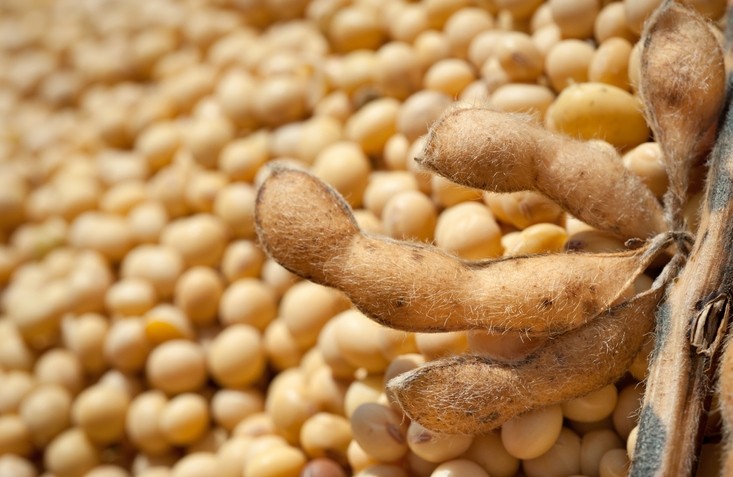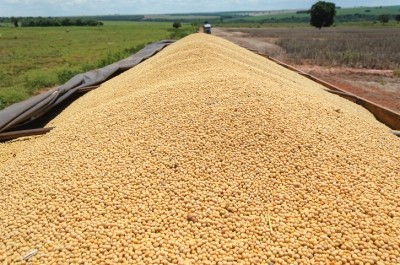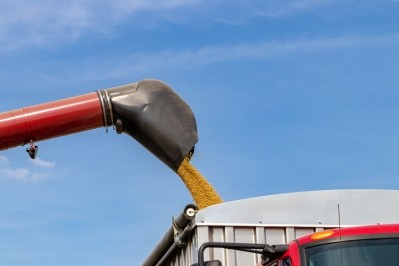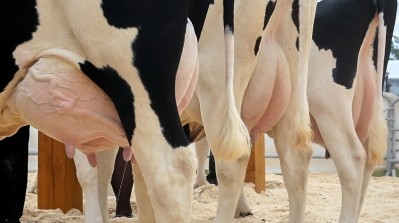WWF calls new FEFAC soy sourcing guidelines a ‘breakthrough’

They are an upgraded version of the first guidance released by the trade body on soy sourcing back in 2015.
FEFAC’s feed sustainability charter 2030, published last year, outlined its ambitions for continuous improvement on responsible soy sourcing; the trade body says the upgraded guidelines cover a range of additional essential and new desired criteria.
The SSGs now include the possibility for interested soy schemes to benchmark against a new conversion-free criterion. Users of a tool on the ITC website will be able to easily scan through and compare the respective non-conversion approaches by different sustainable soy programs.
FEFAC president, Asbjørn Børsting, said he expects the new SSGs will continue to be a key tool for stakeholders in the European soy value chain, assisting their combined efforts to enable mainstream market transition towards sustainable soy sourcing, despite the very challenging market environment today.
Jean-François Timmers, WWF policy and advocacy manager, called the new guidelines a “breakthrough” in terms of setting a reference in conversion-free supply chains.
J.F. Timmers @WWF highlights that soy production and deforestation can be decoupled, citing the example of the #AmazonSoyMoratorium. There is enough cleared land available. It does require players from the chain to work together #SoySourcingGuidelines2021https://t.co/Rw0C340PR9pic.twitter.com/njKa56Oqyj
— FEDIOL (@FEDIOL_EU) February 3, 2021
He participated in a virtual launch of the SSGs 2021 yesterday [February 3].
As did Michel Santos, a member of the steering committee of the Soft Commodities Forum; he said the new version of the SSGs can help drive impact through targeted actions.
Jeroen Gerlag, co-lead, Soy Working Group, Consumer Goods Forum Forest Positive Coalition, also participated in the online launch of the tool; he praised the inclusion of the desired criterion to protect forests and natural ecosystems beyond legal compliance. “Moving the social criteria from desired to essential - so workers rights, land use, etc. - is also very important [for us].”
Daan Wensing, CEO of the sustainable trade initiative, the IDH, emphasized the very pressing need to speed up mainstream market transition towards sustainable soy sourcing. The guidelines should help in this respect, he said. However, he called for an end to reflection, saying the time to act was now.
“We need to really start working together, not to come up with more ideas, but actually to start acting upon them. The guidelines only work if we start using them. We now really have to take them to scale. Yes, there are always things that can be done better, but we have to start moving,” he told attendees.
Development of the guidelines
Doutzen Wagenaar, senior advisor, sustainable supply chains at Schuttelaar & Partners, who supported FEFAC in upgrading of the guidelines, also spoke during the virtual event, saying that in developing the new SSGs, "market demands and [the latest] developments were looked into. We wanted to create guidelines that are relevant today and tomorrow."
The results of a survey FEFAC undertook with representatives of the soy schemes benchmarked against the old guidelines, along with a broader stakeholder consultation, informed the 2021 version, she added.
Wagenaar also outlined how the new SSGs now include 73 criteria, as opposed to 59 in the 2015 guidelines, of which 54 are essential and, also included in the new version, are 19 desired criteria. “This is a substantial upgrade.”
Each scheme must meet at least 8 out of 19 desired [optional] criteria to pass the benchmarking exercise, facilitated by the ITC. FEFAC expects the new round of benchmarking to start in spring, with initial results from that exercise to be made available in May this year.
Some of the new desired criteria in the SSGs reflect current debate in the areas of soil health, integrated pest management, carbon sequestration, and in the areas of protection of forests and natural ecosystems, said the consultant.
“We also used the Accountability Framework to rephrase and clarify some of the criteria that were there before.”
In summary
- 16 desired criteria have been converted into essential criteria across all six pillars
- 14 new desired criteria have been added
- Two new essential criteria on wetlands and biological control agents are added following recommendations by civil society and other stakeholders.
- The criteria for verification are further elaborated upon and new pre-requirements for entering in the benchmark process are added
‘Beyond legal compliance’
FEFAC senior policy and communication manager, Anton van den Brink, hopes that with the greater transparency seen in the SSGs 2021, FEFAC can contribute to the establishment of a mainstream market for responsible soy.
The 2015 guidelines had been criticized by NGOs and others as being too weak, and that they needed to look beyond illegal deforestation.
FEFAC said it fully recognizes that current societal expectations in Europe are setting ‘conversion-free soy’, going beyond the legality principle, as the future political and market norm. The new guidelines reflect that thinking, with the added desired criterion on protecting forests and natural ecosystems beyond legal compliance.
Going beyond the legality principle is a political sensitive matter, said van den Brink, during the SSGs launch. "It is not a simple thing to tell a country that its legal system is not good enough [for us]. As it is, we are in the middle of EU legislative developments, and we would like to see what those developments will lead to for the soy supply chain this year."
Keeping ‘beyond legal compliance’ as a desired criterion for now is seen as the appropriate choice, he continued, in full respect of the legality principle as well as considering the need to give adaptation time to any scheme aiming at providing a solution to the mainstream market.
This decision is subject to review in the foreseeable future in the light of ongoing legislative developments, which may trigger the decision to convert this into an essential criterion, said FEFAC.
The FEFAC SSGs do request schemes have verification of their standard by a third party and that they can substantiate their claim of being able to provide conversion free soy, with satellite images a must in that respect.
It has been argued extensively that carbon capture credits or other systems (Green Bonds, REDD+) could provide compensation and incentivise farmers in soy producing countries to conserve the land they are legally entitled to clear, because premiums paid along the chain may not be a sufficient incentive.
Alexander Döring, secretary general, FEFAC, believes that the new SSGs and transparency tool can further facilitate “the upstream and downstream markets to connect as regards offer and demand, including supply chains with a physical connection.”
He stressed that there is also sufficient market availability of certified/verified no-deforestation/no conversion soy.
“We consider that our precompetitive, mainstream transition approach will assist soy value chain partners to identify robust, verifiable and cost-effective solutions to satisfy growing market demand for no-deforestation/no conversion soy products. Our SSG benchmarking program can assist soy value chain partners' efforts and ambitions to drive positive impacts in ‘high-risk’ areas rewarding farmers for their significant investments in environmental protection measures," he told FeedNavigator.
Currently the market demand in the EU for segregated soy deliveries is very much concentrated around the ‘NON-GMO’ concept, and such soy products command a significant market premium, he noted.
“As highlighted during the panel session at our launch event, FEFAC's mandate is to facilitate mainstream transition to responsibly sourced soy, which ultimately would contribute to delinking EU soy use from conversion-risk/deforestation risk products.”
The presentations and virtual event recordings related to the launch of the SSGs can be found here.









